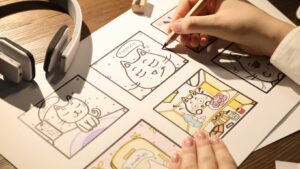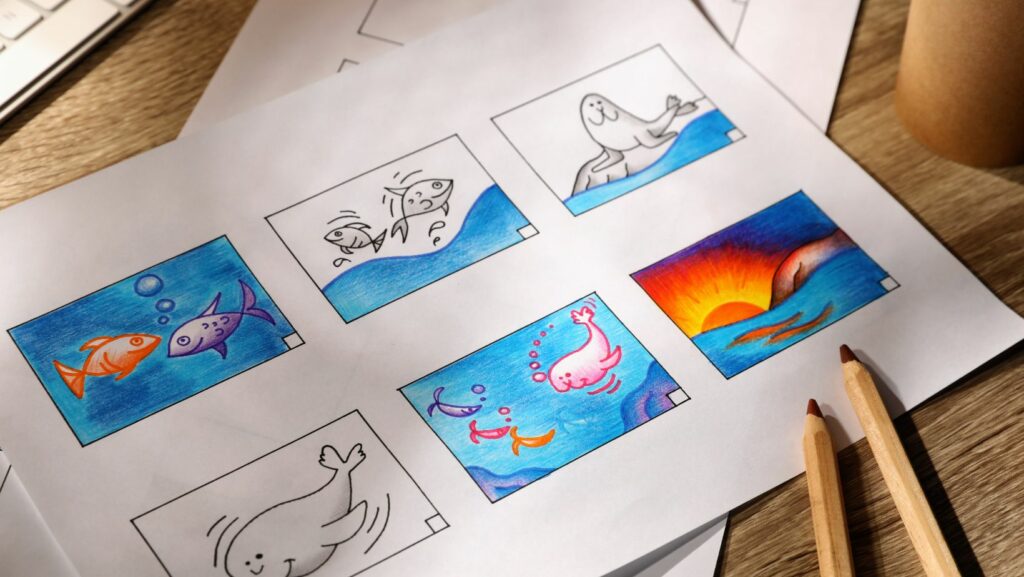 Animation is a captivating art form that brings characters and stories to life through motion and creativity. In the world of animation, there are various types that cater to different styles and techniques. From traditional hand-drawn animation to cutting-edge 3D animation, each type offers a unique visual experience for audiences of all ages.
Animation is a captivating art form that brings characters and stories to life through motion and creativity. In the world of animation, there are various types that cater to different styles and techniques. From traditional hand-drawn animation to cutting-edge 3D animation, each type offers a unique visual experience for audiences of all ages.
Exploring the realm of animation unveils a diverse landscape of styles and methods used to convey narratives and emotions. Whether it’s the classic charm of 2D animation or the immersive realism of motion graphics, each type has its own appeal and application in the entertainment industry. Understanding the differences between these animation styles can provide insights into the intricate world of visual storytelling.
5 Types of Animation
Exploring the world of animation reveals a diverse range of techniques that captivate audiences across various media platforms. Each type of animation offers distinct features, applications, and creative opportunities, contributing to the richness of visual storytelling. Let’s delve into the five main types of animation:
1. Traditional Hand-Drawn Animation
- Traditional hand-drawn animation involves creating individual frames by hand, meticulously crafting each movement to bring characters to life.
- Widely recognized for its artistic expression and charm, this classic technique has been a cornerstone of animation for decades.
- Examples include iconic Disney classics like “Snow White and the Seven Dwarfs” and “The Lion King,” showcasing the timeless beauty of hand-drawn animation.
2. 2D Animation
- 2D animation involves creating characters and scenes in two-dimensional space, often using digital tools to streamline the process.
- Known for its versatility and simplicity, 2D animation remains popular in television series, advertisements, and online content.
- Notable examples include beloved cartoons like “SpongeBob SquarePants” and “Adventure Time,” demonstrating the enduring appeal of this style.
3. 3D Animation
- 3D animation allows artists to model and animate characters and environments in a three-dimensional space, adding depth and realism to the visuals.
- Widely used in blockbuster films, video games, and visual effects, 3D animation offers immersive storytelling experiences.
- Masterpieces like “Toy Story” and “Frozen” showcase the breathtaking capabilities of 3D animation, pushing the boundaries of creativity and innovation.
4. Stop Motion Animation
- Stop motion animation involves capturing individual frames of physical objects or characters in various positions to create seamless movement.

- Known for its tactile and unique aesthetic, stop motion animation has a distinct charm that resonates with audiences of all ages.
- Timeless classics like “Wallace and Gromit” and “Corpse Bride” demonstrate the meticulous craftsmanship and whimsical appeal of stop motion animation.
- Motion graphics blend graphic design elements with animation techniques to convey information, enhance visual storytelling, and create engaging multimedia experiences.
- Widely used in explainer videos, title sequences, and advertising, motion graphics offer a dynamic and engaging way to communicate ideas.
- Websites, presentations, and social media content often incorporate motion graphics to captivate audiences and convey complex concepts effectively.
From the timeless elegance of traditional hand-drawn animation to the cutting-edge realism of 3D animation, each style brings a unique flavor to visual narratives, showcasing the endless possibilities of the animation industry.
2D Animation
2D Animation uses digital tools to create characters and scenes in a two-dimensional space, commonly found in television and online content, such as the popular show “SpongeBob SquarePants.”
3D Animation
3D animation involves modeling characters and environments in three-dimensional space, providing depth and realism in visual storytelling. This technique is prominently featured in blockbuster films like “Toy Story” and “Frozen.” The use of 3D animation allows for immersive experiences and lifelike visuals that captivate audiences in cinemas worldwide.
Exploring the diverse world of animation reveals a rich tapestry of creativity and innovation. Each animation type discussed in the article offers a distinct avenue for storytelling and visual expression. From the timeless charm of traditional hand-drawn animation to the immersive experiences of 3D animation, the art form continues to evolve, captivating audiences across various platforms. Stop motion animation’s tactile allure and motion graphics’ informative visual language further showcase the versatility of animation in conveying narratives. As technology advances and artists push boundaries, the future of animation promises even more exciting possibilities for engaging and enchanting audiences worldwide.

